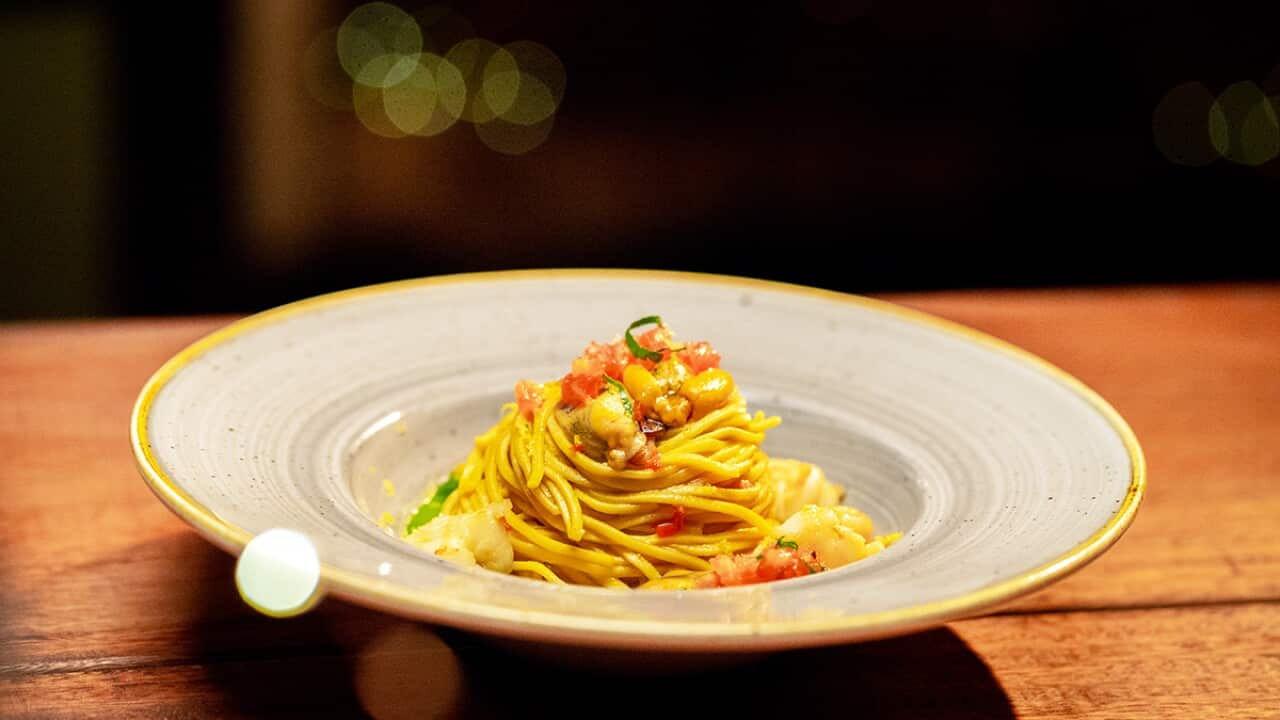‘Healthy’ is a subjective and layered term. It varies person-to-person, wavers between food types and, in the case of pasta, depends very much on ‘how’ we eat the rich and flavour-packed Mediterranean food.
Take the celebrated Italian chef of for example. As a native Italian from Lombardy, he’s had a long-running love affair with the food of his roots: pasta. But there was once a time when the chef rejected the beloved ingredient for health reasons. In 2018, Pavoni became a vegan and eliminated pasta from his diet to eradicate painful bouts of inflammation, caused by rheumatoid arthritis.
Pavoni lasted one year as a vegan before quitting. The Sydney-based owner of three restaurants soon united with the Italian icon once again, reintroducing the estranged food into his diet. Ironically, when he returned to a Mediterranean plant-based eating style featuring pasta, he did so for health reasons.
The reason I can now eat pasta regularly because my guts have the time to process it properly.
“Becoming a vegan was the worst thing I could do [for my specific condition],” says the chef, who has also survived several cancers and open-heart surgery.
“I kept on experiencing joint inflammation. When you’re a vegan, you can end up eating a lot of starchy [plant-based foods]. When eaten, starch is broken down in the body to become glucose and the pancreas releases insulin. The whole process of inflammation [for me] would then start.”
During an episode of chronic inflammation, trigged by diet, Pavoni’s knees would blow up rendering him unable to walk for a month. “I have a very intense job so I couldn’t afford for that to keep on happening. At the time, I needed to keep my joint inflammation under control. So I changed to a plant-based diet. I know what works for me.”
Pasta-eating is personal
As Pavoni readopted pasta, he reclaimed an innate belief in its health value. The chef now eats pasta on a regular basis, feeling free to do so because of ‘how’ and ‘when’ he consumes it.
“I fast every day,” he explains. “I have only water, tea and black coffee for a minimum of 20 hours a day. I eat during a window of time, about four hours every day.
“The reason I can now eat pasta regularly is because my guts have the time to process it properly. My stomach and intestines have a big rest [and recover] during a fast… These days I feel unbelievable. I have never felt so good.”
Eat pasta just like an Italian
Although fasting 20 hours a day works for Pavoni, he acknowledges that it won’t suit everyone. Nor is he recommending that fasting is the only way to eat pasta. His health story and food choices are personal. But Pavoni's lifestyle change and pasta-eating habits remind us of a key consideration when trying to make pasta healthier. ‘Healthy’ isn’t just about the pasta you eat – it’s also about how you eat it.
"I look at the Mediterranean diet in Italy, which includes a lot of pasta, and think about why it's healthy. It's because we Italians don’t eat as much pasta as Australians do in one sitting," says Pavoni. "We typically have it as an entrée – not as a main meal. After a small serve of pasta, we usually eat the main meal of protein with vegetables, plus a salad dressed with vinegar.
“The quality of the pasta tends to be very good, made with flour that uses sustainably grown grain. If the pasta is good quality, you can digest it better.”
Bolognese is not an every day dish but when we do make it, it’s a ragu – not mince.
Pavoni adds that pasta sauces can be creamy white, pink or red: it doesn't matter. What matters is that they are homemade and not sourced out of a jar.
Most of the time, pasta is dressed with seasonal vegetables or a vegetable-based sauce: “pasta could be made with mushrooms, zucchini, pecorino cheese or cherry tomatoes and basil”.
Meat or fish is only used occasionally and the cuts of meat are lean. “Bolognese is not an everyday dish but when we do make it, it’s a ragu – not mince.”
A balanced way
Accredited Practicing Dietitian, , reaffirms that the simplest way to make pasta healthier is to serve it the way it was always culturally intended to be eaten: as an entrée.
“Italians eat pasta in a balanced way, so we’ve never viewed it as ‘unhealthy’,” says Palombo, who grew up in an Italian-Australian family and ate pasta regularly.
Palombo explains that although pasta is a carbohydrate, it’s a low-GI carb. “You've got carbohydrates that are not so healthy – high-GI carbs like chips, cakes and biscuits. They don't have any fibre or nutrients in them. They are just pure glucose carbohydrates.
Italians eat pasta in a balanced way, so we’ve never viewed it as ‘unhealthy’.
“On the other hand pasta fits into the grains food group [in the ]. It provides energy and fibre for your bowels. An average Australian, who is exercising for 30 minutes a day, can eat about six servings of grains per day.”
That can include pasta, rice, cereal and bread. “So technically you could eat pasta every day as your grain of choice if you wanted to. But I always advise that people mix up the type of grains they eat to reap the benefits of a balanced diet.
“The key is moderation. Pasta is healthy if you include it in your diet in the right portions.”








